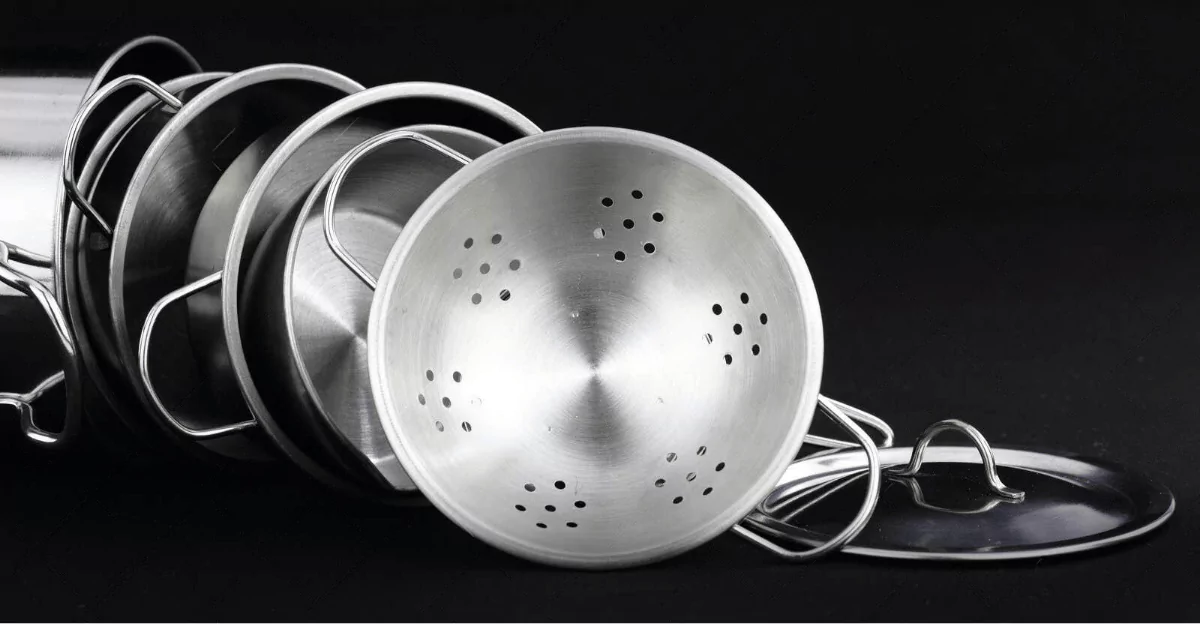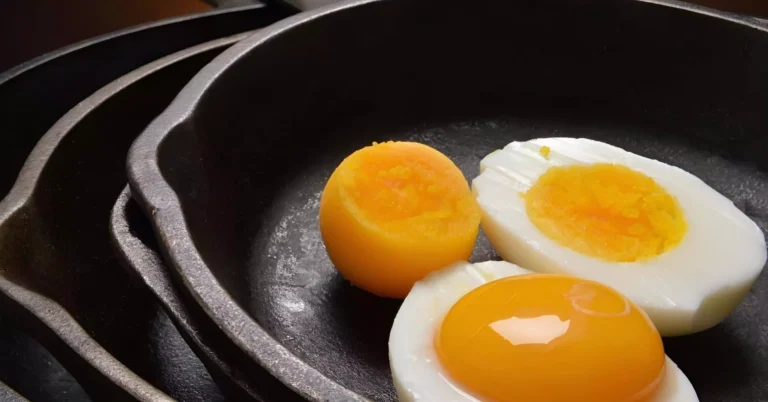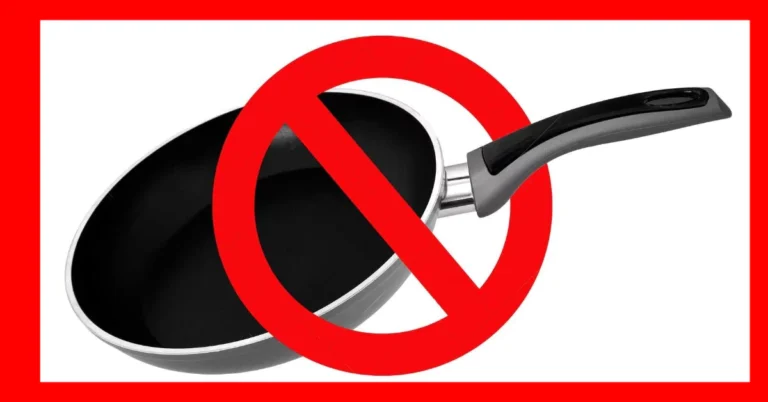Once upon a time, in kitchens around the world, a shining hero emerged to revolutionize the cooking experience – stainless steel cookware. A durable, versatile, and sleek companion standing ready to tackle any culinary challenge with grace and ease.
As the protagonist of our kitchen tales, stainless steel boasts unmatched durability, ensuring it withstands the test of time and countless meals. Its versatility knows no bounds, seamlessly transitioning from stove to oven with effortless precision.
Imagine the joy of even heat distribution, where every dish receives the perfect kiss of warmth, thanks to it’s magical conductivity. And oh, the simplicity of maintenance!
With just a gentle hand and a dash of care, your cookware sparkles anew, ready to tackle the next culinary masterpiece. So, gather ’round, eager chefs, as we learn more about stainless steel in this article.
Table of Contents
Understanding Stainless Steel Cookware
Stainless steel cookware is a staple in kitchens worldwide, prized for its durability, versatility, and even heat distribution. Understanding this material starts with knowing what it’s made of.
Stainless steel is an alloy composed primarily of iron, with chromium added to prevent rusting and corrosion. This makes it perfect for cooking because it doesn’t react with acidic foods like tomatoes or vinegar.
Coming to how durable it can be, let us tell you that it can handle high temperatures, resist scratches, and won’t rust or corrode easily. They’re built to withstand high temperatures without warping or buckling, so you can crank up the heat without worry.
Plus, they’re tough as nails, resisting scratches and dings like a champ.
And the best part? They won’t rust or corrode, even after years of heavy use. Plus, it’s super versatile – you can use it on the stove, in the oven, or even on the grill. And don’t forget about that even heat distribution – no hot spots means your food cooks evenly every time.
Lastly, maintenance is a breeze. Just a little soap and water, and you’re good to go!
You can even think of it like the Swiss Army knife of the kitchen – it can do it all. Need to sear a steak on the stove? No problem. Want to roast a chicken in the oven? Easy peasy.
And forget about switching between different pans for different dishes – stainless steel can handle anything you throw at it, making it the ultimate multitasker.
Some folks think stainless steel cookware heats up slowly, but that’s not true! With a good-quality stainless steel pan and proper preheating, you’ll be cooking in no time.
And don’t worry about sticking – a little oil or butter and the right temperature will keep your food sliding right off the pan.
Choosing The Right Stainless
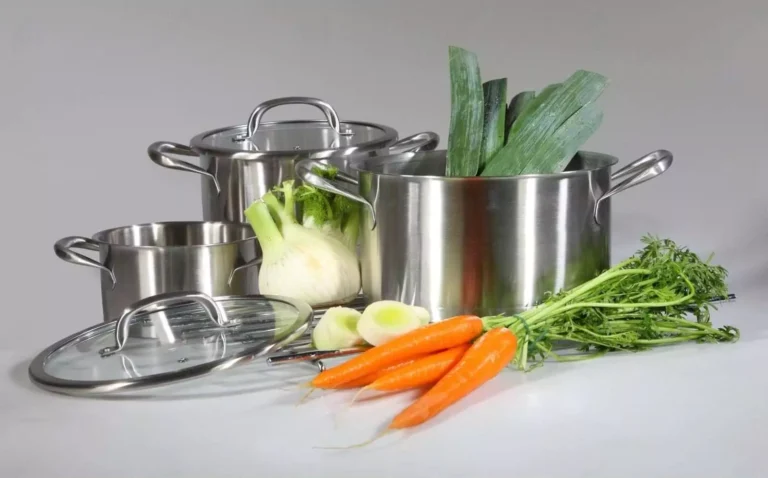
When it comes to choosing the perfect stainless steel pan for your kitchen, there are a few things to consider. If you’re wanting to find find the holy grail of pots and pans, you want something that will stand the test of time and make your cooking even easier. We’re here to guide you through the process.
Obviously, you’ll find so many types of kitchenware when you go shopping. You’ve got your classic pots and pans, perfect for boiling, simmering, and stewing. Then there are the skillets, ready to tackle everything from frying eggs to searing steaks.
Not to forget the trusty saucepans, ideal for whipping up sauces, soups, and more. You may also want to check out cast iron pans in case you want natural non-stick properties and better heat distribution.
But choosing the right cookware is about more than just picking a type – you’ve also got to consider the features that will best suit your needs. First up, thickness. The thickness of your cookware can affect how evenly it heats up, so it’s important to choose wisely.
Then there are the handles – do you prefer long handles for easy maneuverability, or short handles for compact storage? And let’s not forget about lids – essential for locking in heat and flavor while you cook.
Lastly, compatibility with cooktops is key – whether you’re cooking on gas, electric, or induction, you’ll want cookware that can handle the heat.
It’s also important to address any questions or concerns you might have. Like, what’s the deal with stainless steel grades? And how do you know if a pan is truly stainless steel or just coated with it? Don’t worry, we’ve got you covered.
Grades and Coatings
First off, we have the basics – 300 series, 400 series, and 200 series. Think of them as the main categories. You’ve got your basic stainless steel, like 304 and 316, which are commonly used for things like kitchen tools, cookware, and even buildings. They’re durable, resistant to corrosion, and great for all sorts of applications.
Then there are more specialized grades, like 410 and 420, which are often used for in surgical instruments because they’re extra tough and not as resistant to corrosion as the 300 series, but they’re magnetic, which can be handy for some things. You’ll find them in cutlery, sinks, and even some appliances.
Lastly, we’ve got the 200 series. These guys are like the new kids on the block. They’re cheaper than the 300 series, but they sacrifice some of that corrosion resistance. You’ll see them in household appliances and automotive parts.
And, there’s more! Within each series, there are different grades, like 304L or 316Ti. These grades tweak the recipe a bit to give the stainless steel specific properties.
For example, adding titanium to 316 stainless steel makes it even more resistant to corrosion in high-temperature environments.
So, how do you know which grade is right for you? Well, it depends on what you need it for. If you’re cooking up a storm in the kitchen, you’ll want something from the 300 series for its top-notch corrosion resistance. But if you just need something for everyday use, a grade from the 400 series might do the trick.
Now, onto another question – you’ve got this shiny new pan, and you’re wondering if it’s the real deal or just pretending to be stainless steel. It’s actually pretty simple once you know what to look for.
- First off, check for any signs of rust or corrosion. Real stainless steel won’t rust, so if you see any orangey-brown spots, it’s probably not the good stuff.
- They usually have a certain luster to them. It’s not too shiny, not too dull, just right. If it’s coated with stainless steel, it might look a bit too perfect, like it’s trying too hard to impress.
- The real ones should have a nice, shiny finish that’s smooth to the touch. If it looks dull or rough, it might just be coated with a thin layer of stainless steel, which won’t hold up as well over time.
- Another thing to keep in mind is the weight of the cookware. Stainless steel is heavier (because the material is more dense) than other materials like aluminum, so if your cookware feels surprisingly light, it might not be the real deal.
- If you’re still not sure, you can always try the magnet test. Real stainless steel is non-magnetic, so if a magnet sticks to your cookware, it’s probably not pure.
Remember, this is just an oversimplification, and there are still grades of steel that are considered stainless and can still be magnetic like the 400 series. The magnet test will mostly show if it belongs to the 300 series or not.
Using and Caring
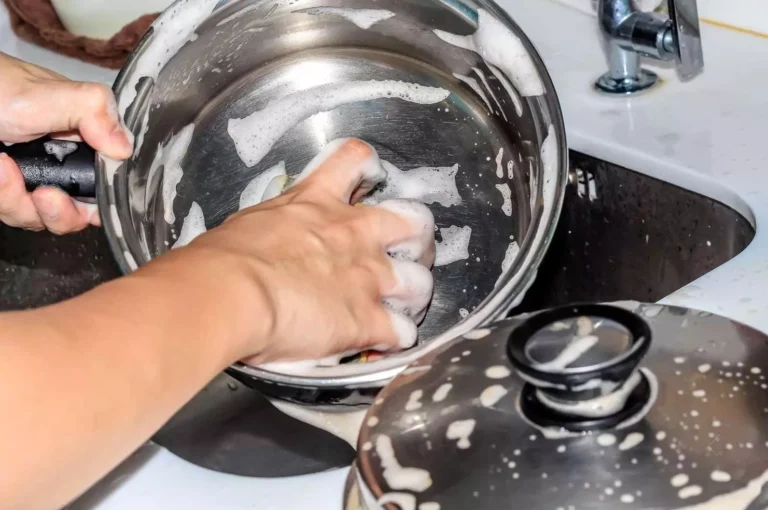
Using and caring for stainless steel cookware is like taking care of a…well, anything really. With the right know-how, it’ll last you a lifetime. Let’s break it down.
First up, preparing for first use. Think of it like breaking in a new pair of shoes – you want to make sure they’re ready for action. Start by giving your cookware a good wash with warm, soapy water to remove any manufacturing residues.
Then, it’s time to season your pans. No, not like seasoning a steak – we’re talking about creating a non-stick surface by heating oil in the pan until it smokes, then letting it cool. This will help prevent sticking and make cleanup a breeze.
Now, let’s talk about understanding heat settings. This is where things can get a little tricky. Stainless steel doesn’t conduct heat as quickly as some other materials, so it’s important to preheat your pans before adding food. Think of it like warming up your car on a cold winter morning – it takes a little time, but it’s worth it in the end.
And remember, stainless steel can handle high temperatures, so don’t be afraid to crank up the heat when you’re cooking.
And, what about cooking tips? Well, preheating your pans is just the beginning. You’ll also want to use the right utensils – think wooden or silicone instead of metal, to avoid scratching your shiny new kitchenware.
And don’t forget to keep an eye on your food as it cooks – stainless steel can be unforgiving if you walk away and let things burn.
Now, let’s talk cleaning and maintenance. Handwashing is usually your best bet – just a little soap and water will do the trick. But if you’re short on time, most stainless steel cookware is dishwasher safe, just be sure to check the manufacturer’s instructions.
And if you’re dealing with stubborn stains or stuck-on food, a little baking soda or vinegar can work wonders.
Lastly, storing your cookware properly is key to keeping it looking like new. Stack your pots and pans with a layer of paper towel or cloth between them to prevent scratches, and avoid using metal scouring pads or harsh cleaning chemicals that can damage the surface.
So there you have it – with a little TLC, your stainless will have a home in your kitchen for years to come.
Some Concerns
- One of the biggest myths is that stainless steel cookware is completely immune to staining. While it’s true that stainless steel is highly resistant to staining, it’s not totally invincible.
Acidic foods, like tomatoes or citrus fruits, can sometimes cause discoloration if left sitting in the cookware for too long. - Another misconception is that you need to use special cleaners to keep your stainless steel cookware looking shiny and new. In reality, all you really need is some hot, soapy water and a soft cloth to wipe it down.
Avoid using abrasive cleaners or steel wool, as they can scratch the surface of the cookware and dull its shine.
Where Do You Look For The Best Stainless?
Firstly, we’ll give you some recommendations for reputable brands and retailers. You’ll find tons of kitchen tools in the market, but how do you know which ones are worth their weight in gold?
Look for trusted brands like All-Clad, Cuisinart, and Calphalon, etc. They are known for their high-quality stainless steel cookware that’s built to last.
And when it comes to retailers, think big – stores like Williams Sonoma, Sur La Table, and Bed Bath & Beyond are sure to have a wide selection to choose from.
You should keep your eyes peeled for deals and discounts that can help you score a bargain on your dream kitchenware. Whether it’s a holiday sale, clearance event, or just a good old-fashioned promotion, you never know when you’ll stumble upon the deal of a lifetime.
With the right tools in your kitchen arsenal, there’s no recipe you can’t tackle. Here are a few that are popular among the crowds and we think will certainly help you sharpen your skills in the kitchen.

